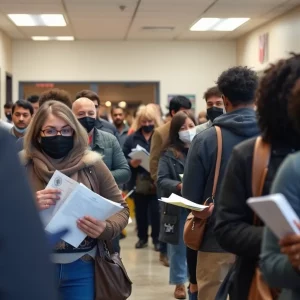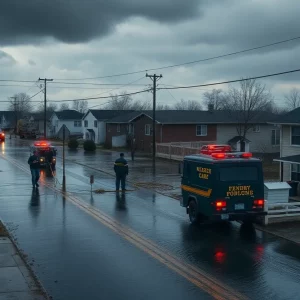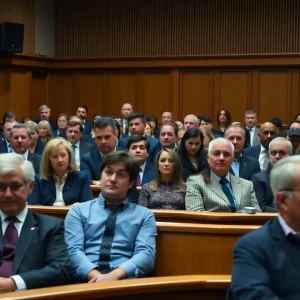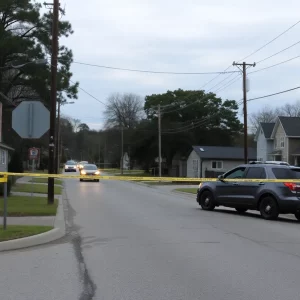News Summary
Malcolm Gelsthorpe, a 68-year-old vintage train engineer, is set to receive up to £495,000 in compensation after being diagnosed with mesothelioma, a cancer caused by asbestos exposure. Gelsthorpe alleges his illness resulted from unsafe working conditions at the Steamtown Railway Museum in Lancashire. Following a favorable ruling from the High Court, Gelsthorpe’s case highlights the risks faced by tradespeople dealing with hazardous materials, raising questions about workplace safety and accountability.
Vintage Train Engineer Set for Major Asbestos Compensation
Malcolm Gelsthorpe to Receive Up to £495,000 Following Mesothelioma Diagnosis
The story of Malcolm Gelsthorpe, a vintage train engineer, begins in a place of nostalgia, the grand carriages of the Orient Express. This historical gem, a train that has captivated hearts since 1883, has also become the unlikely backdrop for a tragic health saga. Gelsthorpe, 68, is poised to receive a payout of up to £495,000 after being diagnosed with incurable mesothelioma, a devastating cancer directly linked to asbestos exposure, which he alleges occurred during his restoration work at the Steamtown Railway Museum in Carnforth, Lancashire.
A Journey Through Time and Hazard
In the 1980s, Gelsthorpe worked diligently as an electrical engineer, restoring iconic train carriages that commanded respect and admiration. His expertise was invaluable in revitalizing these vintage vessels, essential as they operated routes that included journeys as far as Istanbul. However, Gelsthorpe’s commendable efforts in preserving railway history have come at a brutal cost.
After receiving news of his terminal diagnosis, Gelsthorpe took legal action against his last employer, St Hoggs Property Investments. He claims that his exposure to hazardous materials during his years of service led to his current health crisis. The High Court has already sided with Gelsthorpe, acknowledging the evidence supporting his illness due to asbestos exposure while he performed his restoration duties.
What Lies Beneath the Carriages
As the court proceedings unfold, lawyers have specified that Gelsthorpe’s exposure to asbestos primarily happened during his work with plywood fittings on the carriages. Notably, most carriages had their inner shells sprayed with asbestos, a material well-known for its toxic properties. The hazardous working conditions were exacerbated by the presence of asbestos dust and debris found within electrical cupboards and heating units, all mounted on asbestos boards.
This exposure was not isolated; Gelsthorpe claimed that while working on heaters, he released significant amounts of respirable asbestos fibres, yet was never advised to use proper respiratory protective equipment. As a result, Gelsthorpe and his colleagues inadvertently contaminated their workwear with asbestos dust, leading to even more significant exposure during breaks spent together.
The Defense’s Stance
Despite the court’s initial support for Gelsthorpe’s claims, St Hoggs Property Investments has contended that they cannot be held liable for his illness. They maintain that they hired specialized teams for asbestos removal and provided personal protective equipment. This defense raises important questions about responsibility and accountability in workplaces where hazardous materials are present.
Next Steps in the Case
Judge Roger Eastman has ruled in Gelsthorpe’s favor, yet the exact amount of damages remains subject to resolution in a subsequent hearing if a mutual agreement is not reached. The hazardous conditions described by Gelsthorpe’s solicitor, Sarah Kennerley-Fawcett, paint a troubling picture of workplace safety—or lack thereof. She highlighted the pervasive risks, with asbestos found in insulation sprayed on the train’s metal carcass, under seats, and surrounding heating systems.
Reflection on a Hidden Danger
As this case develops, it serves as a stark reminder of the hidden dangers that tradespeople may face in restoring and maintaining historical sites. With Gelsthorpe’s story now garnering attention, there’s hope for others who have suffered similar fates from exposure to lethal materials like asbestos. The outcome of this legal battle may not only be pivotal for Gelsthorpe but could bring awareness to the ongoing plight of workers affected by historical negligence.
Deeper Dive: News & Info About This Topic
HERE Resources
Johnson & Johnson’s Bankruptcy Bid Thwarted: Legal Challenges Intensify
Mesothelioma Lawyer Webinar: Proving Asbestos Exposure
Lawyers Highlight Asbestos Exposure Challenges in Mesothelioma Cases
Legal Storm Brews Over Johnson & Johnson’s Talc Products
Compensation for Mesothelioma Victims: Sokolove Law’s Approach
The Evolving Landscape of Mesothelioma Litigation and the Role of Law Firms
West Virginia University Faces Asbestos Lawsuit: Lawyer Speaks Out
Urgent Appeals for Asbestos Claims: A Call to Action for Lawyers
Asbestos Company Held Liable for Millions in Damages
Circle K in Charleston Faces Legal Trouble Over Contaminated Gas
Additional Resources
- BBC News: Asbestos compensation claims
- Wikipedia: Mesothelioma
- The Guardian: Asbestos exposure and cancer cases
- Google Search: Asbestos exposure news
- Reuters: Asbestos and Legal Perspectives
- Encyclopedia Britannica: Asbestos
- The Independent: Asbestos cancer deaths and compensation
- Google News: Malcolm Gelsthorpe
























